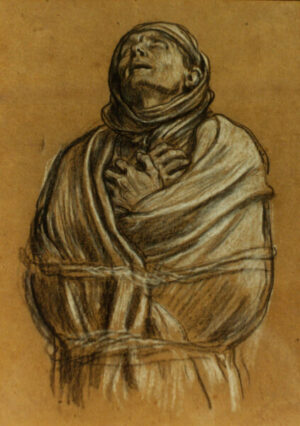Leighton, Frederick (1830-1896)
English painter and sculptor. He spent much of his youth travelling on the Continent with his family. This cosmopolitan background was of great importance to his development as an artist.
Between 1855 and 1859 Leighton was based in Paris. The period marks the beginning of a transition in his work, from the exact draughtsmanship and historical detail of the Nazarenes to a broader synthesis of influences, embracing the painterly effects of Venetian art, the realistic landscapes of Jean-Baptiste-Camille Corot and Charles-François Daubigny and the classical subject-matter of Thomas Couture's followers.
The years 1859–64 were marked for Leighton critical hostility. He was increasingly preoccupied with the formal problems of academic painting.
The psychological content of Leighton's work became increasingly complex in the late 1860s and the 1870s. Canvases of this period frequently show the confrontation between the forces of life and death.
Leighton's interest in sculpture was a natural extension of his increasingly sculptural treatment of the painted canvas.
After his election as President of the Royal Academy in 1878, Leighton was increasingly regarded as the leader of the Victorian art establishment. The themes already dominant in his art remained constant throughout the last 20 years of his life. Increasingly in his last years a note of melancholy entered his work. Leighton died exhausted by his battle with heart disease and the demands of his public role as President of the Royal Academy. It is significant that he left no school of pupils to continue a tradition that itself was almost exhausted.
Showing the single result
